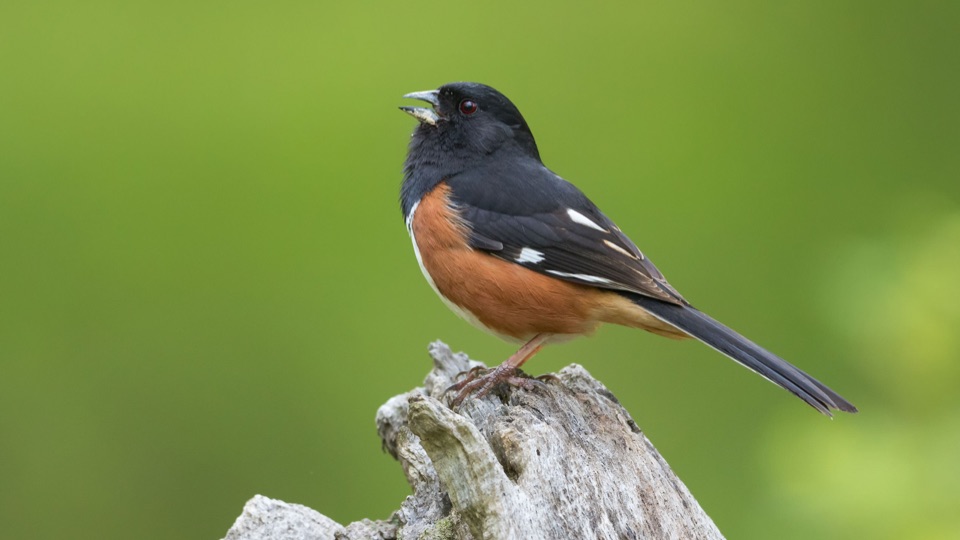Worldwide, there are 13 different species of Towhees, and 6 of them are found in North America. While many share very similar characteristics, there are some quick and simple ways to spot the difference between these attractive secretive songbirds.
Towhees are often heard rather than seen. They spend most of their time on ground level and sometimes fly into low trees to sing their patented ‘chewink’ songs during the breeding season.
These ground-dwelling birds even build their nests closer to ground level, making them even more tricky to spot. While they’re related to the House Sparrow, they aren’t quite as common to spot at backyard birdfeeders!
There are six different species of Towhee peppered throughout North America. Some species stay in areas long enough to breed, others pack it up and head south for the winter. No matter where you live in North America, odds that there are Towhees in the midst – you only need to look a little harder to find them!
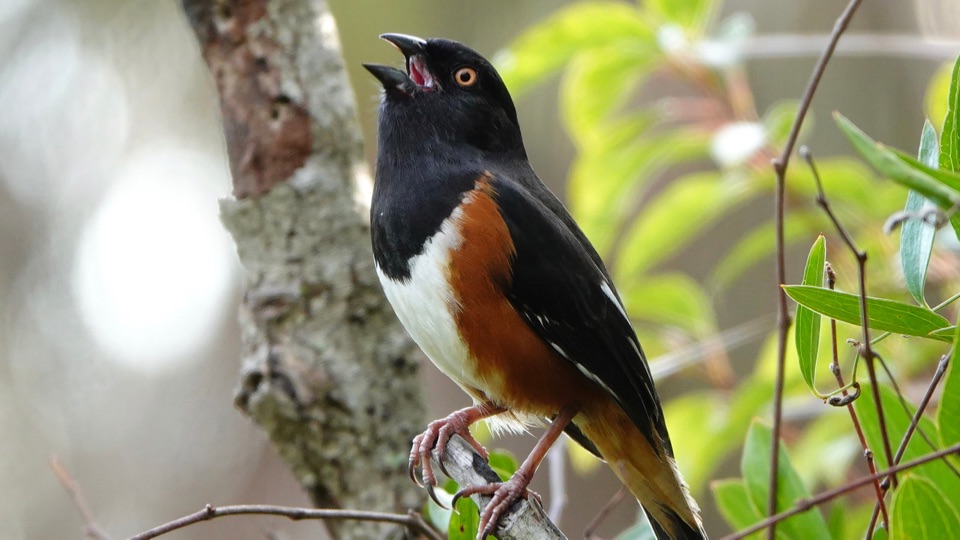
Eastern Towhee
The Eastern Towhee has the coloring of an American Robin but with similar features to a House Sparrow. Male Towhees have a chalky black head and wings with an orange breast. It may look like a Robin, but certain features give it away as an Easter Towhee.
The beak of the Eastern Towhee has a triangular shape similar to a Sparrow that is jet black. Also, the sizing of the Eastern Towhee is slightly larger than a Sparrow but still smaller than a Robin. It measures eight inches long with a 10-inch wingspan. It weighs 1.4 ounces, while a Sparrow only weighs .8 ounces.
The time of year and location is another great way to identify an eastern towhee. During the breeding season, these wild songbirds live in the Great Lakes Region and New York. Some eastern towhees will also dwell as year-round residents in the Southeast United States.
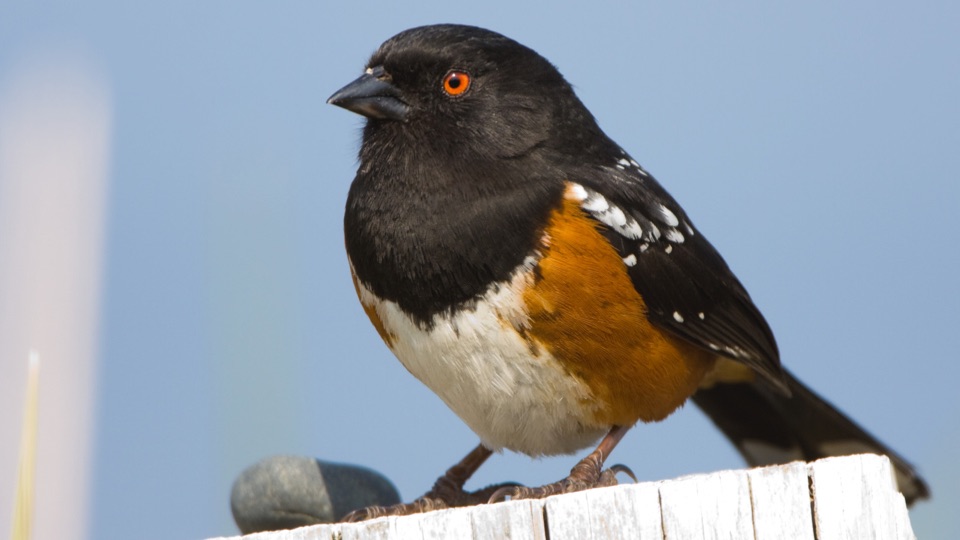
Spotted Towhee
There is a very subtle difference between the Easter Towee and Spotted Towhee. These two bird species used to be classified under one umbrella- the Rufous-sided Towhee. They have very similar characteristics in coloring and behavior, which can make it difficult to spot the difference between the two.
One of the most notable differences between the Spotted Towhee and the Eastern Towhee boils down to the subtle difference in the pattern of feathers. The Spotted Towhee, has white spots on the feathers, while the Eastern Towhee has subtle white lines on its wing feathers. Other than the pattern of white spots, it’s very easy to confuse these two birds!
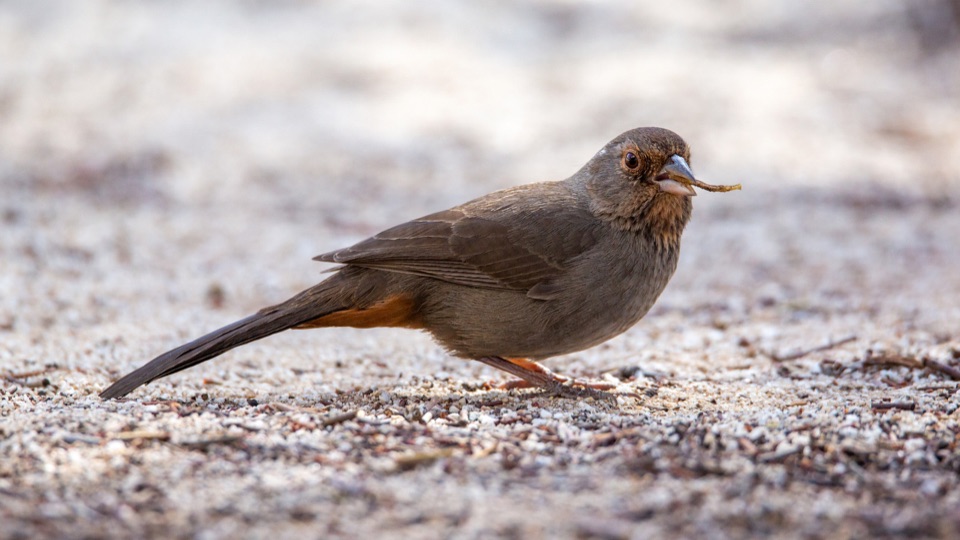
California Towhee
Unlike the other species of Towhees, the California Towhee is simple to spot based on its location and coloring. It lives in the very eastern portion of California along the Pacific coastline. These non-migratory birds are permanent residents and often live in brushy and shrubby areas at low elevations.
Compared to other subspecies of the Towhee, the range map of the California Towhee is limited to a narrow stretch of land in California and parts of Mexico. They are found in primarily dry areas and make stops at backyard feeders located near thickets and tangles.
They have very muted washed-out brown upperparts with a burnt orange shade (similar to the Eastern Towhee) on their underparts.
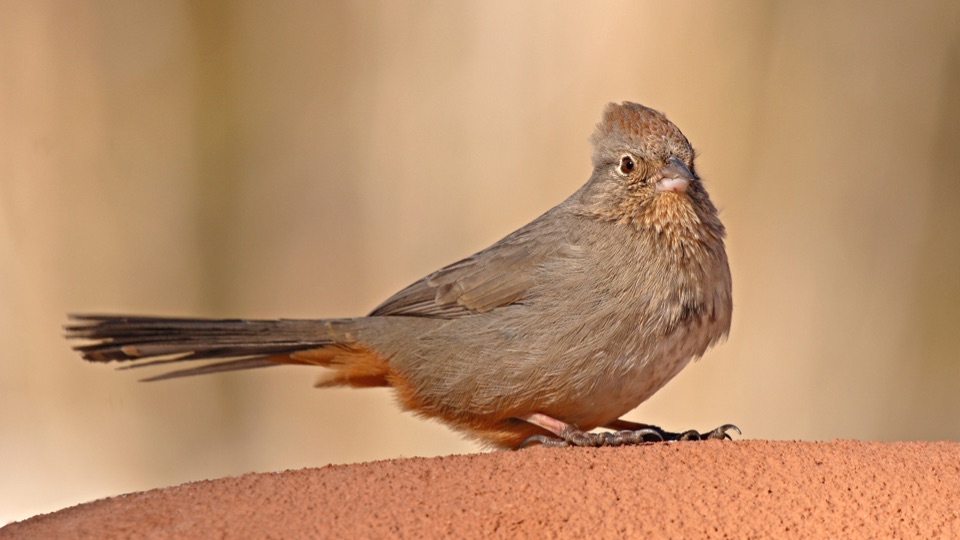
Canyon Towhee
The Canyon Towhee has a similar muted brown coloring to the California Towhee. Despite its very similar color to the Californa Towhee, this passeriform lives in dry, warm climates, and the two habitats do not overlap.
These songbirds live in desert areas in the southern portion of the United States around Texas and Alabama and down into most parts of Mexico. Like other North American Pipilo erythrophthalmus, they are slightly larger than a Sparrow but not quite as big as a Robin.
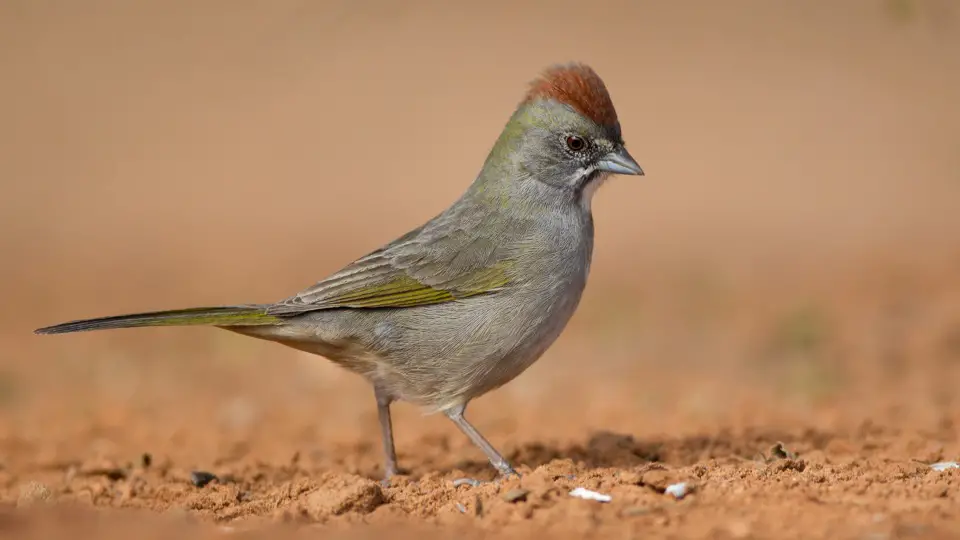
Green Tailed Towhee
The Green Tailed Towhee is one of the smallest species of Passerellidaes, but it’s the most striking. With an olive green tail and wings and an orange cap, there’s no mistaking the green tailed towhee species.
During the breeding season, they spend their time low on the ground and low trees in the southeast corner of North America. Full-time broods live primarily on the southern border of the United States and well into Mexico.
While they are plentiful in Southern States and Mexico, it’s rare to spot one. They spend a lot of time hiding from predators, but their ascending trills are a quick giveaway of their location. Often, you can hear a hidden Green Tailed Towhee before you see one!
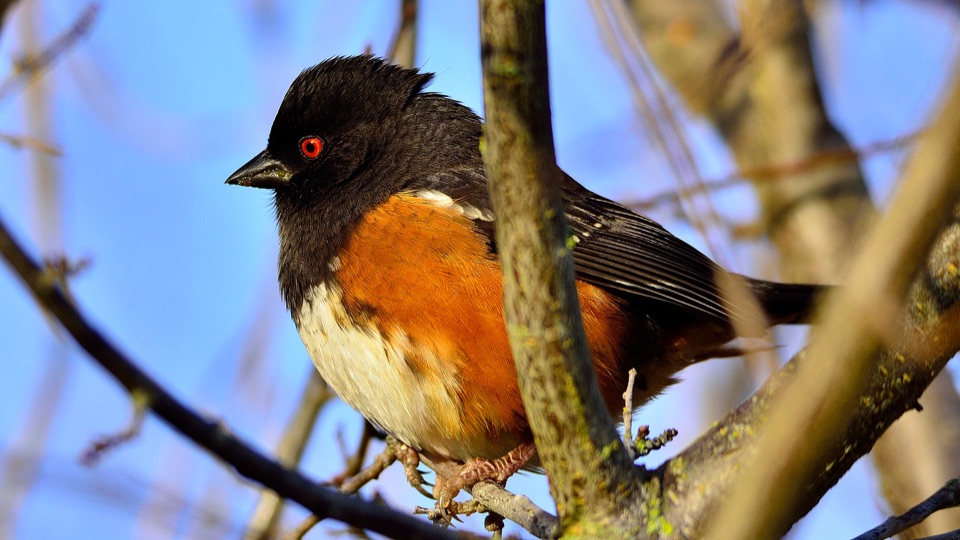
Abert’s Towhee
Abert’s Towhee reside in a very small section of Arizona and isn’t found anywhere else in the world! If you spot an Albert’s Towhee, it’s super rare!
At a glance, this species of Towhee very much resembles a House Sparrow in coloring as well as size. They have muted brown feathers with just a subtle dusting of orange on their underbelly. However, just like a Sparrow, they have a triangular brown beak and are of similar size.
Unique Towhee Facts
- Not all Towhees have black eyes. Sometimes Towhees’s eyes are black or various shades of brown. As you travel further south to states such as North Carolina and Florida, there have been spottings of Towhees with white eyes!
- Towhees can’t recognize Cowbird eggs. Cowbirds are notorious for laying their eggs in other nests and letting other songbirds raise their young. While most songbirds don’t fall for this deception, Towhee’s don’t recognize that Cowbird eggs are foreign and will raise hatching Cowbirds as their own.
- They can sometimes be spotted at birdfeeders. Towhees are ground-dwelling birds, but that doesn’t mean they won’t visit your birdfeeders! While they won’t perch on a high-hanging birdfeeder, they can sometimes be found pecking through sunflower seeds, leaf litter, and corn that made its way to the ground.
- Towhees eat snail shells. Towhees are avid bug eaters, and that includes snails and their shells. The meat of the snail offers a good deal of protein and nutrition, while the shell offers calcium
Quick Ways to Identify A Towhee
If you hear the classic chewink trill of a Towhee (heard more often in spring and early summer), keep your eyes on the ground—even the Towhees nest directly on the ground in heavy brush and along forest edges.
More often than not, A Towhee will announce their presence before you even see them. Birdwatchers often keep their eyes on high tree branches looking for rare birds, but the Towhee is found on ground-level. If you hear a Towhee- look down instead of up!

